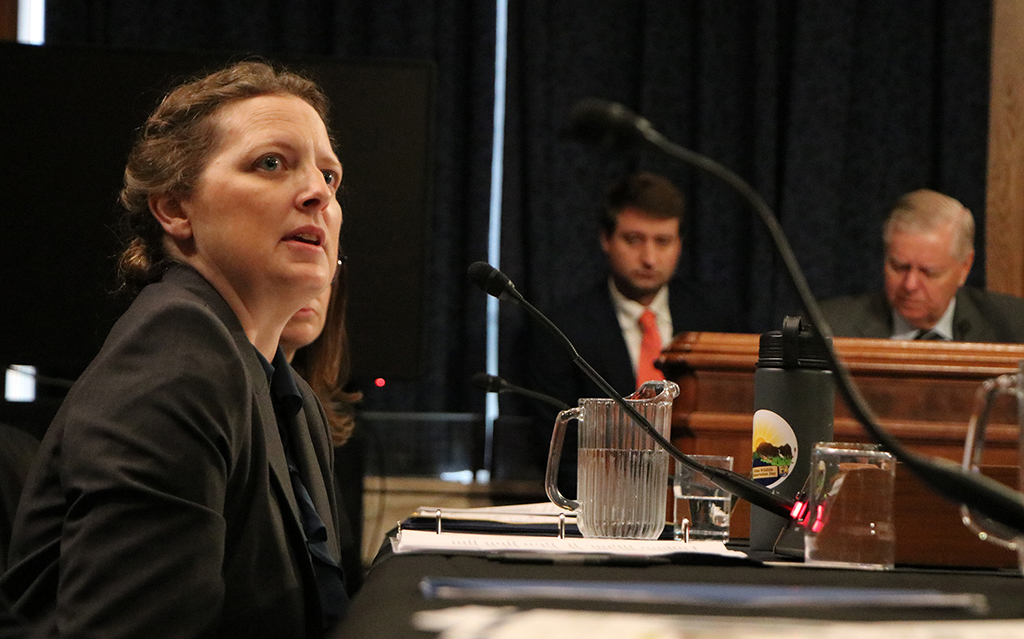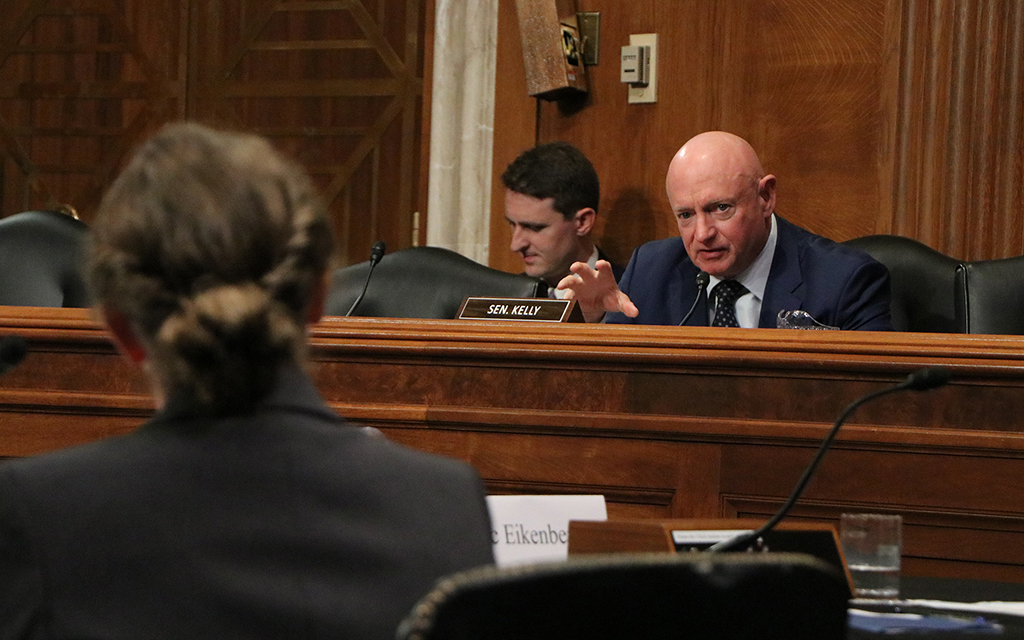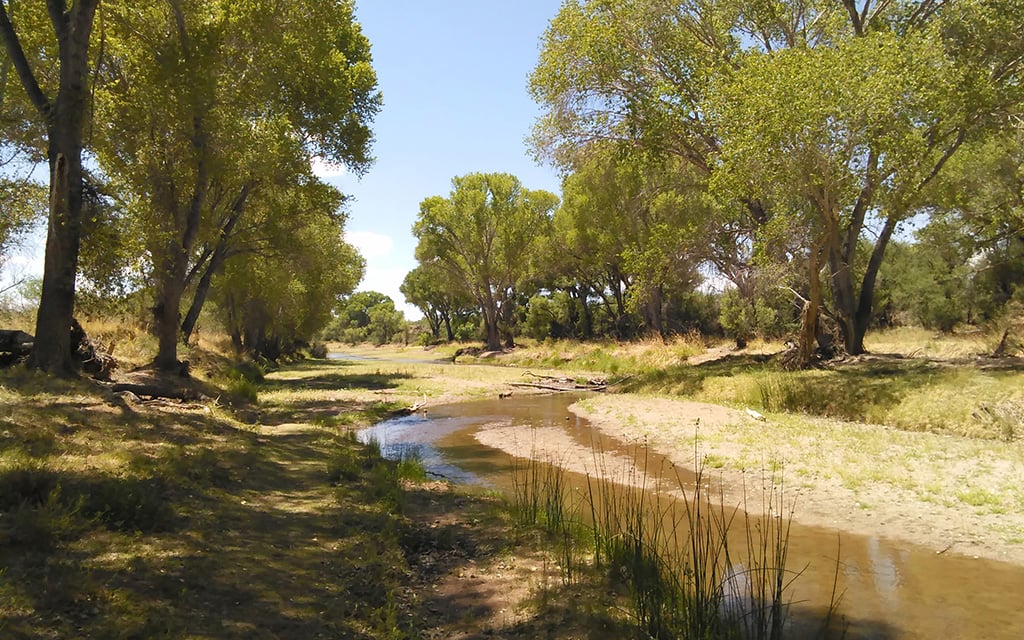
Tricia Balluff of Phoenix’s Office of Environmental Programs told a Senate Environment and Public Works Committee hearing that federal funding has helped restore rivers in the Valley, but that more help is needed to remove invasive salt cedars from riparian habitats. (Photo by Liam Coates/Cronkite News)
WASHINGTON – A Phoenix city official told lawmakers Wednesday that Army Corps of Engineers assistance with river restoration projects has provided wide-ranging benefits for the Valley, but that there is more to be done.
In testimony to a Senate panel, Phoenix Environmental Programs Coordinator Tricia Balluff said ecosystem restoration projects like Rio Salado and Tres Rios have provided flood reduction and recreational opportunities while preserving critical habitat. And investment in those projects has saved local governments millions in avoided water system improvements, she said.
“The city of Phoenix is appreciative of the many benefits that have come from collaborating with the Corps,” Balluff said. “We fully support the Corps’ mission in undertaking and completing ecosystem restoration, particularly in the Southwest.”
She was one of three officials from around the country at a Senate Environment and Public Works Committee hearing who heaped praise on the Corps for its role in ecosystem restoration projects from the Everglades to the desert.
Sen. Tom Carper, D-Del., and chairman of the committee, said the projects orchestrated by the Corps were “win-win, not just for our environment but also our economy,” recalling French President Emmanuel Macron’s address to Congress when he said “there is no planet B.”
Balluff cited several Arizona projects undertaken in partnership with the Army Corps, which she said aim to create new habitats, extend existing ones, and remove the invasive salt cedar while also attempting to save water in the drought-ridden state.
She said the Tres Rios project has saved the city $375 million in “avoided cost” because it meant the city did not have to upgrade the filtration system in the 91st Avenue wastewater treatment plant, the largest such facility in Arizona.
Tres Rios is a multistage project that uses effluent from the plant to create wetlands, fulfilling the dual purpose of saving water and creating habitat for over 200 species, some endangered and threatened, according to Balluff.
“Tres Rios’ use of constructed wetlands to treat wastewater using natural processes make this a unique core project that helps compliance with regulatory standards while simultaneously providing quality habitat,” she said.
Even without the other benefits, Balluff said, “simply from a financial perspective (Tres Rios) made a lot of sense.”
Another project namedropped by Balluff as a successful collaboration between the city and the Corps was Rio Salado Phoenix, which was completed in 2009 and involved the restoration of 5 miles of the Salt River for native plants and the creation of wetland habitat.
Plans call for Rio Salado Phoenix to be followed by Rio Salado Oeste, would add a further 8 miles to the restored area. Funding was provided last year to continue preliminary work on the project.

Sen. Mark Kelly, D-Ariz., questions Tricia Balluff of Phoenix’s Office of Environmental Programs on the benefits of ecosystem restoration projects and the challenge of invasive species like salt cedar. (Photo by Liam Coates/Cronkite News)
When asked by Sen. Mark Kelly, D-Ariz., what further support the Corps could provide to the city, Balluff said with a laugh, “more projects to help remove salt cedar would be fantastic.”
Kelly asked for details on the invasive plant, which Balluff said consumes a lot of water and increases the saline content of the soil, damaging riparian habitat. This is an issue because, according to her opening statement, “70% of threatened and endangered vertebrates in Arizona depend on riparian habitat along rivers.”
The Army Corps of Engineers is responsible for constructing infrastructure projects around the country like flood defenses, dams, military facilities and ecosystem restoration and they have around 37,000 employees.
When Carper asked the witnesses why young people should care about their work and about the environment in general, Balluff said rivers, and their protection, are crucial to preserving their future.
“Do we want our kids to inherit a world in which our rivers are dry and dusty in the Southwest with nothing in them but landfills and sand and gravel pits?”

